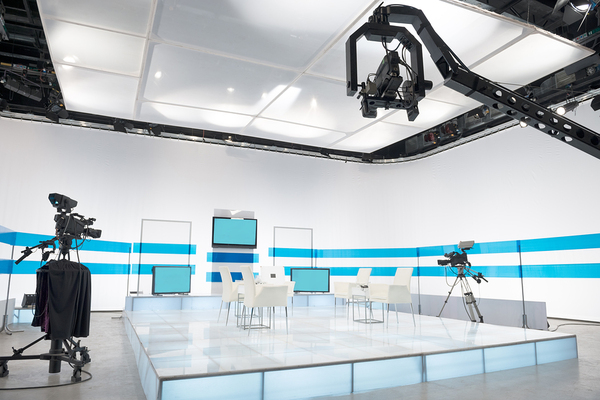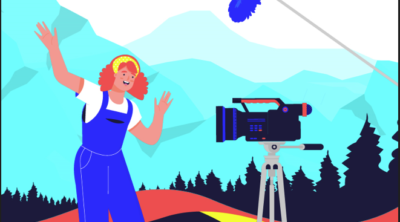< Back to all posts
Movement in Corporate Videos
In the film industry, keeping up with the rapid growth of technology is actually the easy part. The much harder part is keeping up with your audience’s preferences – how they consume and respond to your content. Specifically, there has been a rising trend for the appreciation of movement in corporate videos. To help you keep up with this growing preference, here’s everything you need to know about movement:
The Basics of Movement
Corporate clients are always looking for ways to creatively work movement into their videos, so this exciting trend is definitely something to pay attention to. It’s important to clarify that we’re talking about deliberate, good movement here, not a shaky camera. Generally, there are several types of movement you should be aware of:
- Panning – moving the camera lens horizontally – from side to side.
- Tilting – moving the camera lens vertically – up and down.
- Zooming – perhaps the most common movement technique, zooming makes the subject appear closer or further away.
- Racking – changing the focus of the lens in the middle of a shot.
There are a number of additional movement techniques, too. Pedestal involves moving the entire camera up and down without actually moving the lens. Likewise, dolly involves moving the entire camera closer or further away from the subject without zooming in or out on the subject. Trucking is moving the camera to the left or right without actually moving the lens.
Necessary Technology and Equipment
Advanced shooting techniques that involve movement require advanced equipment. This includes items such as dollies, jibs, and gimbals. Dollies, as their name suggests, allow crews to physically dolly the camera, moving it forward or backward. Jibs operate like a see-saw and allow for unique camera movements. Gimbals are quickly overtaking sticks for corporate video shoots. Gimbals allow for movement and are used to make sure there is no shaking or vibrations visible in the shot. This allows for a lot of opportunities, such as mounting cameras to cars or drones for interesting, stable footage.
If you’re on a tighter budget, you can look into purchasing sliders. Sliders allow you to achieve just enough movement into your shots to be effective and are much less expensive than dollies or jibs. It’s a great way to take advantage of this trend without breaking the bank.
Of course, the camera itself is just as important as the rest of the equipment. One particularly appealing camera is the Sony Fs7. With the burgeoning demand for movement in video content, the demand for the Fs7 has increased greatly. As our own amazing DP, Joe, explained, “It’s the obvious choice for corporate videos. The Sony Fs7 shoots HD, UHD, and 4K all with a Super35 chip so you always get the option to use a very shallow DoF.”
So what does this mean for the crews? Joe says, “For the crews, it means you get a lot more creative control with the image, but also it can be more difficult on complex shots. For example, on dolly, jib, Steadicam or gimbal moves, shallower depth of field means a smaller focal range to nail the move. Overall it means a better image for the client, and that’s what we are here for”.
Regarding your crew, when you’re dealing with moving shots and a variety of specialty equipment, it is always a good idea to hire a grip. Grips are specialists in rigging and handling equipment and lighting. They’ll work closely with the rest of your crew to ensure that your cameras are properly supported. If necessary, they can operate your dollies, cranes, or even your drones. With the right grip, you’ll have the expertise necessary to operate any piece of equipment and nail the perfect moving shot.
Tips and Tricks for Shooting Movement Properly
Once you have the basics down and the right equipment, you’re ready to start shooting moving corporate videos. To ensure that the footage is up to par, however, you need to keep the following advice in mind:
- Move slowly – moving your shot too quickly runs the risk of making your shots jerky or blurred. Slowing down your footage is also a useful storytelling technique and can help to evoke emotion and highlight your message.
- Stay focused – in order to keep your shots consistent, you need to keep a focal point as you move your shot. For example, if you’re zooming in or out, stay focused on a single subject. If you’re moving side to side, focus on a horizontal line.
- Turn off automatic options – Shooting a moving shot means that you’re changing focus, distance, and even lighting levels constantly. If you have options such as auto exposure or auto focus on, it won’t be able to keep up with your movements. This ends up making your shots inconsistent and barely usable.
- Never use digital zoom – If you’re using a camera to take home video, digital zoom is just fine. For professional videos, however, you should avoid it at all costs. The shots are pixelated and low-quality, not something you want to put your company’s name on.
 Using movement in corporate videos is a great way to add an artistic flair to your shots and give your viewers what they’re looking for. It’s clear, however, that it’s difficult to implement without the proper expertise and equipment. If you’re looking to hire the right crew for your next movement shots, make sure to reach out to us here at Crews Control. We’ll make sure you get a crew that has what it takes to take great shots without any jerkiness or unnecessary movement, no matter where you want to film.
Using movement in corporate videos is a great way to add an artistic flair to your shots and give your viewers what they’re looking for. It’s clear, however, that it’s difficult to implement without the proper expertise and equipment. If you’re looking to hire the right crew for your next movement shots, make sure to reach out to us here at Crews Control. We’ll make sure you get a crew that has what it takes to take great shots without any jerkiness or unnecessary movement, no matter where you want to film.
To get started all you need to do is click here for a free quote!







Leave a Reply